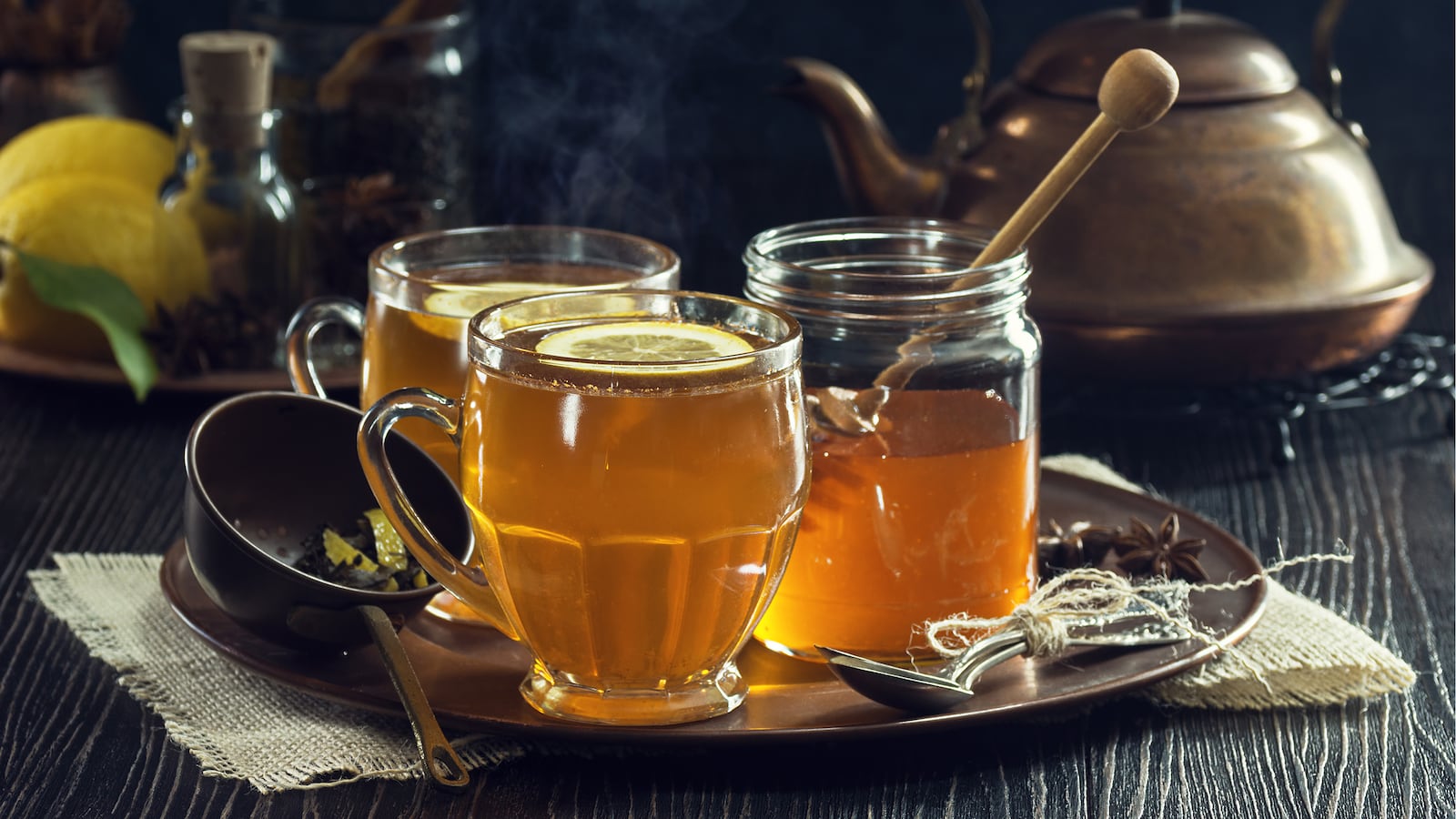Like the Martini, which exists to decapitate the day and fertilize the evening with its blood, the Hot Toddy has a specific function in this world: It exists to light and fuel a little, glowing furnace somewhere between your heart and your liver. And, like the Martini, in its original state it is a remarkably simple, efficient drink, one that can accomplish everything it needs to do with a mere three ingredients.
Now, I know that if you go into a bar and order a Hot Toddy it’s not going to have three ingredients. It’s going to have booze, sure, and often more than one type. If you’re not careful, one of those types might even be London dry gin. There will be a splash of honey or maple syrup or some other liquid sweetener. Spices will be deployed with a generous hand: cinnamon, always, plus some combination of nutmeg, cloves, ginger, allspice or what-have-you. If the bar is la-di-da, there might even be some Chartreuse in there, or Bénédictine, or ancho chili liqueur. Finally, the whole thing will be irrigated with hot cider or tea, which can be anything from fine pu-erh to Lemon Zinger. And, speaking of lemon, the odds are pretty good that some of that will be squeezed in there as well.
I won’t deny that all of this can make for a pleasant and gently warming drink, just like a stemmed, v-shaped glass full of citrus vodka, Cointreau, and lime and cranberry juices—AKA a Cosmopolitan—can be a damn nice drink on a warm day. But just because something is in a Martini glass that does not mean it’s a Martini, and if there’s one thing we’ve learned in this country in the past fifteen years, it’s to call a Cosmo a cocktail and not a Martini.
The Hot Toddy is a very old drink, dating back to the mid-eighteenth century, and until the last couple of decades it has always been made from spirits, sugar and boiling water, with maybe, just maybe a swatch of lemon peel thrown in there (although, technically, that makes it a “Skin,” and not a Toddy).
It doesn’t sound like much, does it? Sugar, water, and booze. But here’s the thing: if you choose your ingredients carefully (by which I mean the booze—water is water and while there are plenty of types of sugar out there, which one you use won’t make or break the drink), the combination lights that furnace and keeps it glowing for a remarkably long time, as even the sharpest drafts and nastiest, most Arctic chills are beaten back into their holes. Your cheeks glow, your heart is off on a beach in Tobago, your gizzard is lounging around in its skivvies. Without all those extra frills and flounces to cushion its impact, the Toddy becomes an elemental, almost feral drink. It laughs at the cold, and you with it.
Plus—and this is very important—there is no drink easier to make. It’s so simple it’s an insult to recipes to call the directions a recipe. That means there’s no excuse not to make one.
Put a kettle of water on.
When it boils, turn the heat off and pour some of the water into a coffee mug and swirl it around. This is the Toddy equivalent of chilling your Martini glass.
Pour the water out.
Put a heaping teaspoon of sugar in the mug. I like Demerara sugar here, but again, plain white sugar works fine. If you’ve really got a thing for honey, go ahead and use it. But it makes a mess, which makes you less likely to make a Toddy in the first place. The worst Toddy is no Toddy.
If you’re using lemon peel, add it now. I like a two- or three-inch strip, cut with a peeler with as little pith as possible.
Add some more water from the kettle—about an ounce, give or take. Half an inch in the cup, like that. Stir to dissolve the sugar.
Add your booze, a good, solid two ounces—an inch in the cup, give or take. I’ll get to what kind in a moment.
Add more hot water—another ounce or so. Stir a couple of times.
Sip slowly and be warm.
Let me repeat: once the mug is warmed, it goes like this: Sugar, water, stir; booze, water, stir. Memorize that.
As for the booze. The original spirits for Hot Toddy were all made on old-fashioned pot stills: French brandy, Jamaican rum, Dutch genever, Scotch and Irish whiskey. Those still work the best, by far: the thick texture of the spirit means that the Toddy will fell rich and silky on your palate as it goes down. For brandy, you want a VSOP Cognac or Armagnac; something rich and dark, but not too hideously expensive. For rum, something old-school and funky, such as Smith & Cross or one of the better Appletons. Genever sounds like a stretch, but it can work really well, particularly if you can get one with a whole lot of pot still in it, such as the new Old Duff Single Malt Genever, but the Bols grey-bottle genever works great, too. Bourbon, although rarely pot stilled, can work as long as it’s on the rich and mellow side. Mezcal? Generally, aged spirits work better, but a smoky mezcal Toddy is a good gutter-fighter. But these are all opening acts. Even Irish pot-still whisky, as fine a Toddy as it makes, is not the headliner here.
The superstar of Hot Toddy spirits is single malt Scotch (blended Scotches tend to be too light-bodied to carry off the drink). The Toddy was a Scotch drink in the first place, and in America the only type of Scotch whisky imported until the 1880s was single malt, all of which was consumed in Hot Scotches, as they were called. If you’ve got an Islay malt that’s just too smoky to drink on its own, this drink is what it was born for. You lose none of the flavor—there’s nothing to mask it—and the whisky’s peaty reek climbs up into your brain, turning wherever you are into a fireside seat in the coziest pub in the Highlands.
Even better, the malt doesn’t have to be particularly old, since you’re adding enough water to tame any residual fire it might have. That 10-year-old Laphroaig? Nectar. Compass Box Peat Monster? A puddy tat.
So, sugar, water, stir; Scotch, water, stir. The Polar Vortex can go suck it.






